All solutions here are suggested. Mr. Teng will hold no liability for any errors. Comments are entirely personal opinions
Numerical Answers (workings/explanations are after the numerical answers. Click to expand.)
Question 1: ![]()
Question 2: ![]()
Question 3: ![]()
Question 4: ![]()
Question 5: ![]()
Question 6: Sample; ![]()
Question 7: ![]()
Question 8: ![]()
Question 9: ![]()
Question 10: ![]()
Question 11: ![]()
Total marks: 6 marks
(a)![]()
By comparing real and imaginary parts,![]()
![]()
(b)![]()
![]()
![]()
![]()
![]()
Total marks: 6 marks
Perimeter ![]()
Area, ![]()
![]()
The equation did not specify to use “calculus”, we may solve this graphically.
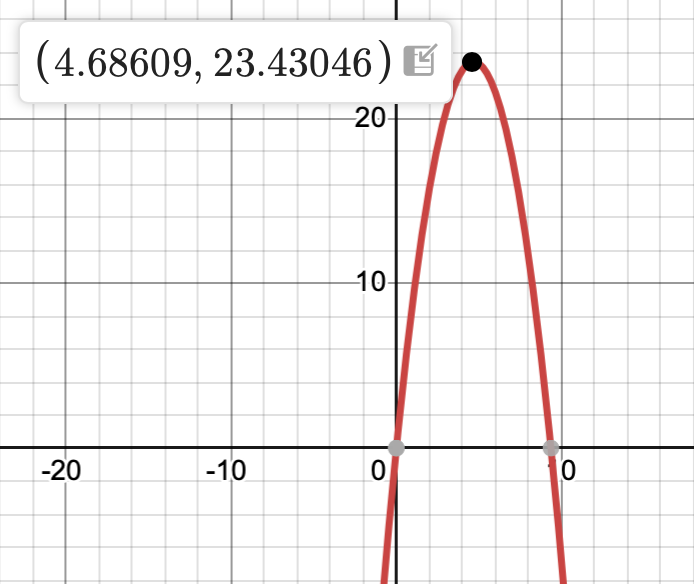
From the graph, the maximum point occurs when ![]() and the maximum area
and the maximum area ![]()
There is also discussion regarding the question phrasing, attached below.

And it seems that ![]() should be the shorter side, which suggests that
should be the shorter side, which suggests that ![]() , now if that is the case, we will have that
, now if that is the case, we will have that ![]() . Should
. Should ![]() , then the maximum area is
, then the maximum area is ![]() . I do not know which is the better one. So we will only find out in 2025.
. I do not know which is the better one. So we will only find out in 2025.
Total marks: 8 marks
(a)![]()
![]()
(b)
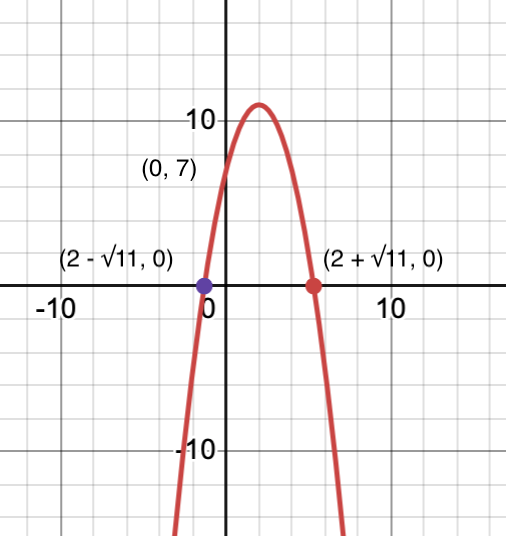
(c)
Method 1:
Draw the graph of ![]() , do label the endpoints and explain the horizontal line test, i.e., Any horizontal line
, do label the endpoints and explain the horizontal line test, i.e., Any horizontal line ![]() cuts the graph of
cuts the graph of ![]() at most once, thus,
at most once, thus, ![]() is a one-one function and
is a one-one function and ![]() exists.
exists.
Method 2: ![]()
For ![]() , we have the
, we have the ![]() and
and ![]() , thus
, thus ![]() is a strictly decreasing function and thus it is one-one. Thus,
is a strictly decreasing function and thus it is one-one. Thus, ![]() exists.
exists.
(d)![]()
![]()
Total marks: 9 marks
(a)![]()
![]()
![]()
![]()
(b)![]()
![]()
Using GC, ![]() or
or ![]()
(c)
Using GC,
When ![]()
When ![]()
Thus, the smallest number greater than 100 in both series U and series V is ![]() .
.
(d)(i)![]()
![]()
Since ![]() may be an odd or even number, observe that if
may be an odd or even number, observe that if ![]() is odd, then
is odd, then ![]() is even. Similarly if
is even. Similarly if ![]() is even, then
is even, then ![]() is odd. Clearly, the product of an odd and even number is even. This implies that
is odd. Clearly, the product of an odd and even number is even. This implies that ![]() is an even number.
is an even number.
Since ![]() is a multiple of two, it must be even.
is a multiple of two, it must be even. ![]() is an odd number.
is an odd number.
The sum of two even number is an even number, then ![]() is an even number.
is an even number.
The sum of an even and an odd number is an odd number, then ![]() must be an odd number. Thus all terms in series
must be an odd number. Thus all terms in series ![]() are odd numbers.
are odd numbers.
(d)(ii)![]() .
.
Since ![]() is a multiple of two, all terms in series
is a multiple of two, all terms in series ![]() are even numbers.
are even numbers.
Since all terms in series ![]() are odd numbers, then series
are odd numbers, then series ![]() and series
and series ![]() do not have any terms in common.
do not have any terms in common.
Total marks: 11 marks
(a)(i) Reflection of ![]() about (in) the
about (in) the ![]() line
line
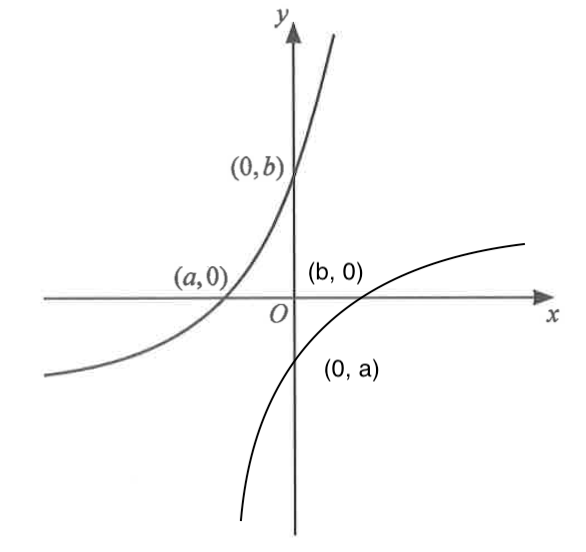
(a)(ii) Using the above graph, translate 1 units in positive ![]() direction and scale by factor 2 parallel to the
direction and scale by factor 2 parallel to the ![]() axis. Note question does not require the
axis. Note question does not require the ![]() -intercept, which we should not be able to give.
-intercept, which we should not be able to give.
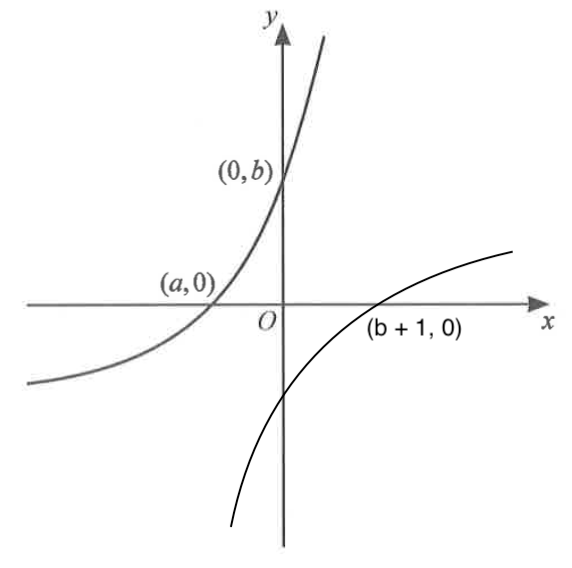
(b)(i)
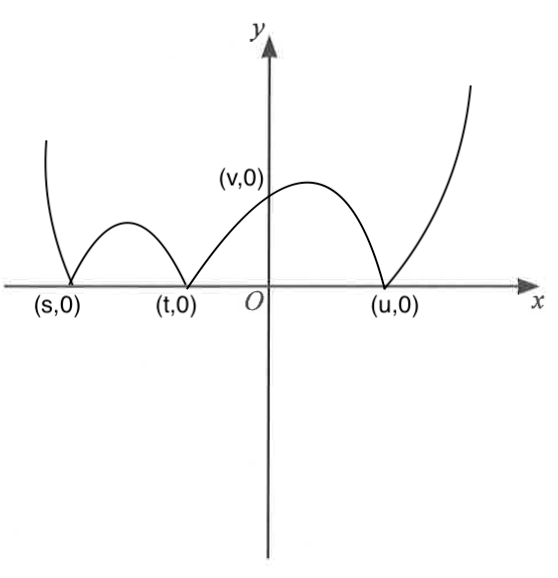
(b)(ii)
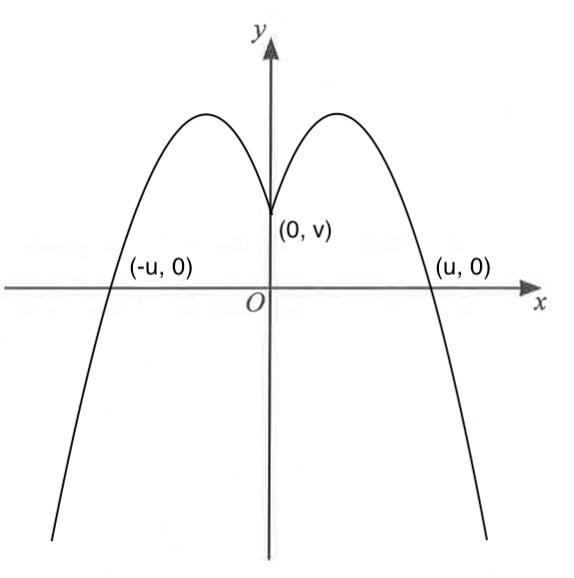
(c)(i)(ii)
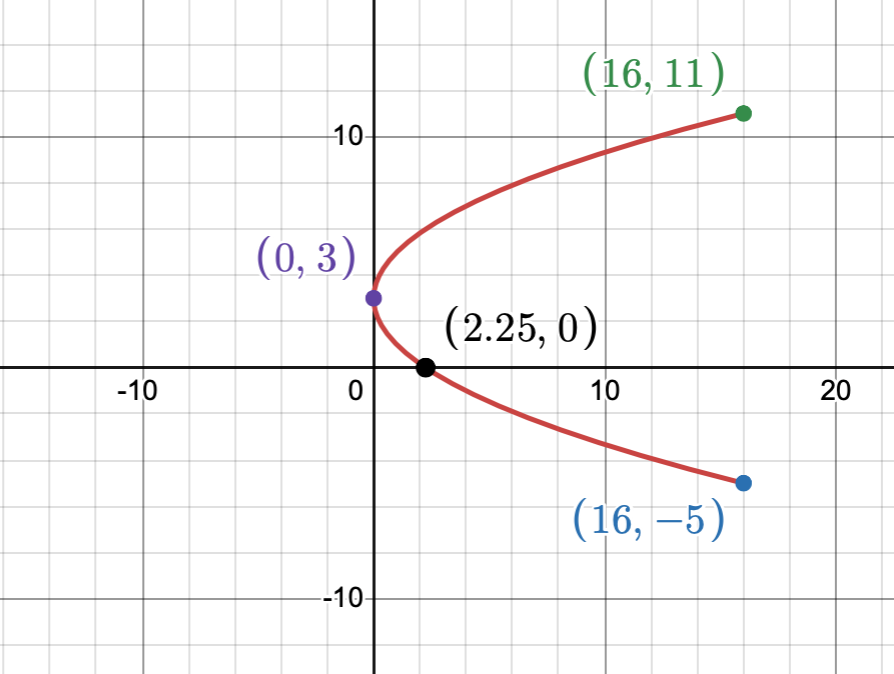
(c)(iii) The lines of symmetry is ![]()
Total marks: 6 marks
(a) The 65 member comprise a sample since they form a subset of the population of 90 members.
(b) A random sample ensures that each member has an equal chance of being selected, independently of each other. This will avoid bias.
(c)
We start by finding the total number of ways:
AAAYYS: ![]()
AAAYSS: ![]()
AAAAYS: ![]()
Required probability ![]()
Total marks: 8 marks
(a)(i)
Required probability ![]()
(a)(ii)
Required probability ![]()
(a)(iii)![]()
![]()
![]()
Total marks: 8 marks
(a) Lee should carry out a one-tailed test since he is testing for a definite decrease (reduction)
(b) Let ![]() be the population mean number of birds visiting the feeder every morning.
be the population mean number of birds visiting the feeder every morning.![]()
![]()
(c)
Unbiased estimate of population mean ![]()
Unbiased estimate of population variance ![]()
Under ![]() approximately by central limit theorem since sample size,
approximately by central limit theorem since sample size, ![]() is sufficiently large.
is sufficiently large.
Using GC, p-value ![]()
For ![]() to be rejected, p-value
to be rejected, p-value ![]()
Thus, the minimum possible integer value of ![]() is
is ![]() .
.
(d) Lee can conclude with sufficient evidence at ![]() level of significance that the mean number of birds visiting the feed in 20 minutes each morning has reduced.
level of significance that the mean number of birds visiting the feed in 20 minutes each morning has reduced.
(e) Since the distribution for the number of birds visiting the feeder every morning is unknown, a sample size of 10 mornings will be not sufficiently large to approximate the sample mean distribution to a normal distribution by central limit theorem.
Total marks: 11 marks
(a) Credits: https://people.hsc.edu/faculty-staff/blins/StatsTools/binomialPlotter.html

(b) Required probability ![]()
(c)(i) The event that a randomly chosen burger has insufficient cheese in them is independent of another randomly chosen burger having insufficient cheese in them. The probability of a randomly chosen burger having insufficient cheese in them is constant at ![]() for each trial.
for each trial.
(c)(ii)![]()
Required probability![]()
![]()
![]()
(c)(iii) Required answer ![]() (3 s.f.)
(3 s.f.)
(c)(iv) Let ![]() be the number of burgers found to have insufficient cheese in them, out of 3360 burgers.
be the number of burgers found to have insufficient cheese in them, out of 3360 burgers.![]()
Required probability![]()
![]()
![]()
Total marks: 11 marks
(a) Let ![]() be the masses of plates before drilling, in grams.
be the masses of plates before drilling, in grams.![]()
Required probability![]()
![]()
(b) ![]()
![]()
Let ![]() be the number of plates with masses between 190g and 192g, out of 8 plates.
be the number of plates with masses between 190g and 192g, out of 8 plates.![]()
Required probability ![]()
![]()
![]()
(c) Let ![]()
![]()
Required probability ![]()
![]()
(d) Let ![]() and
and ![]() be the masses of screws and bolts respectively, in grams.
be the masses of screws and bolts respectively, in grams.![]()
![]()
For 20 drilled plates, we need 80 screws and 40 bolts.
Let ![]()
![]()
Let ![]() be the mass exceeded by just
be the mass exceeded by just ![]() of the value packs.
of the value packs.![]()
![]()
Total marks:
(a)(i) The scatter diagram suggests that as ![]() increases,
increases, ![]() increases decreasingly.
increases decreasingly.
(a)(ii) Observe that both given models suggest the same trend and we will need to calculate the product moment correlation coefficient (PMCC) to select the appropriate model.
Using GC, PMCC for ![]()
Using GC, PMCC for ![]()
Since the PMCC for ![]() is close to 1, it suggests stronger positive linear correlation between
is close to 1, it suggests stronger positive linear correlation between ![]() and
and ![]() . Thus, the more appropriate model. Using GC, we find that
. Thus, the more appropriate model. Using GC, we find that ![]() and PMCC
and PMCC ![]()
(a)(iii) ![]() cents.
cents.
Since ![]() is within the data range of
is within the data range of ![]() , this is interpolation and the estimate is reliable.
, this is interpolation and the estimate is reliable.
(b)(i)
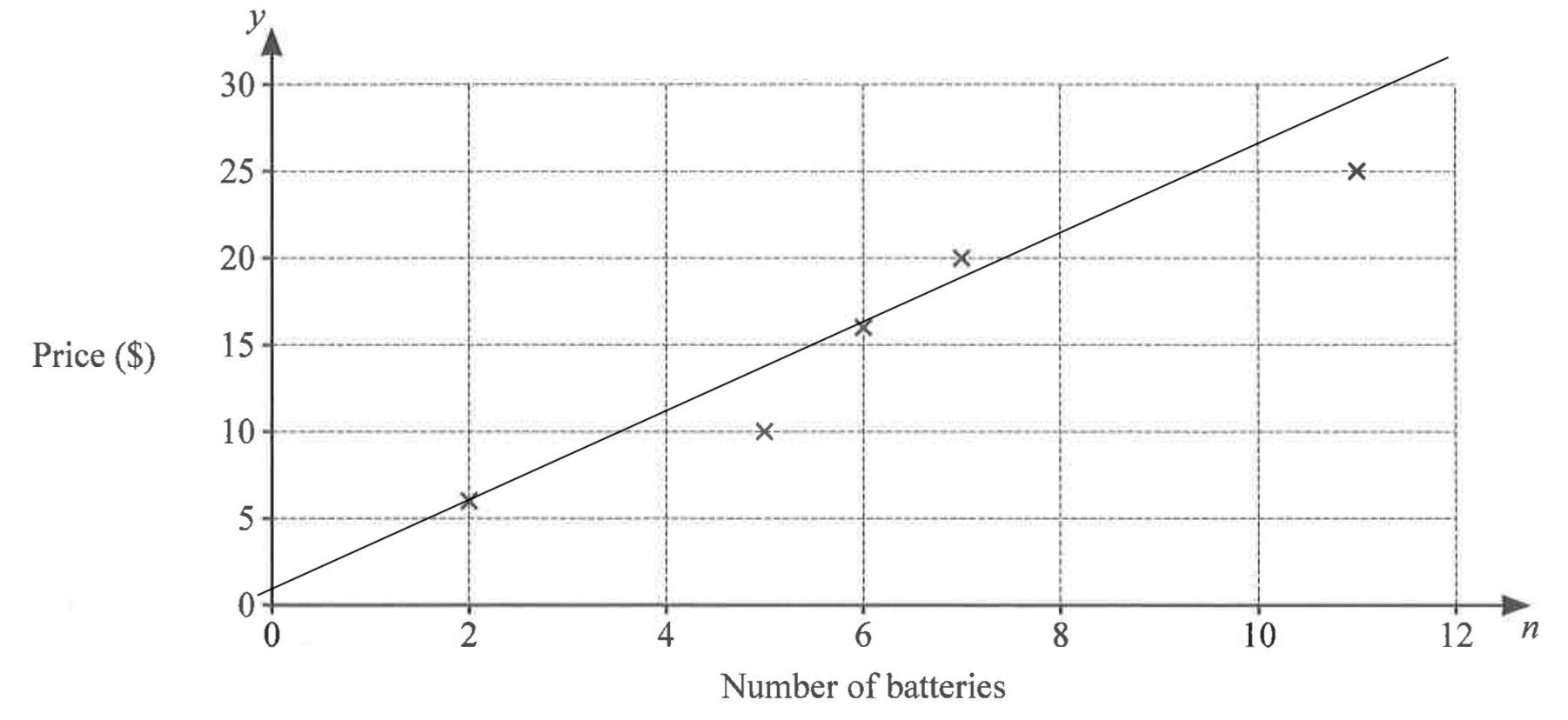
(b)(ii)(A)
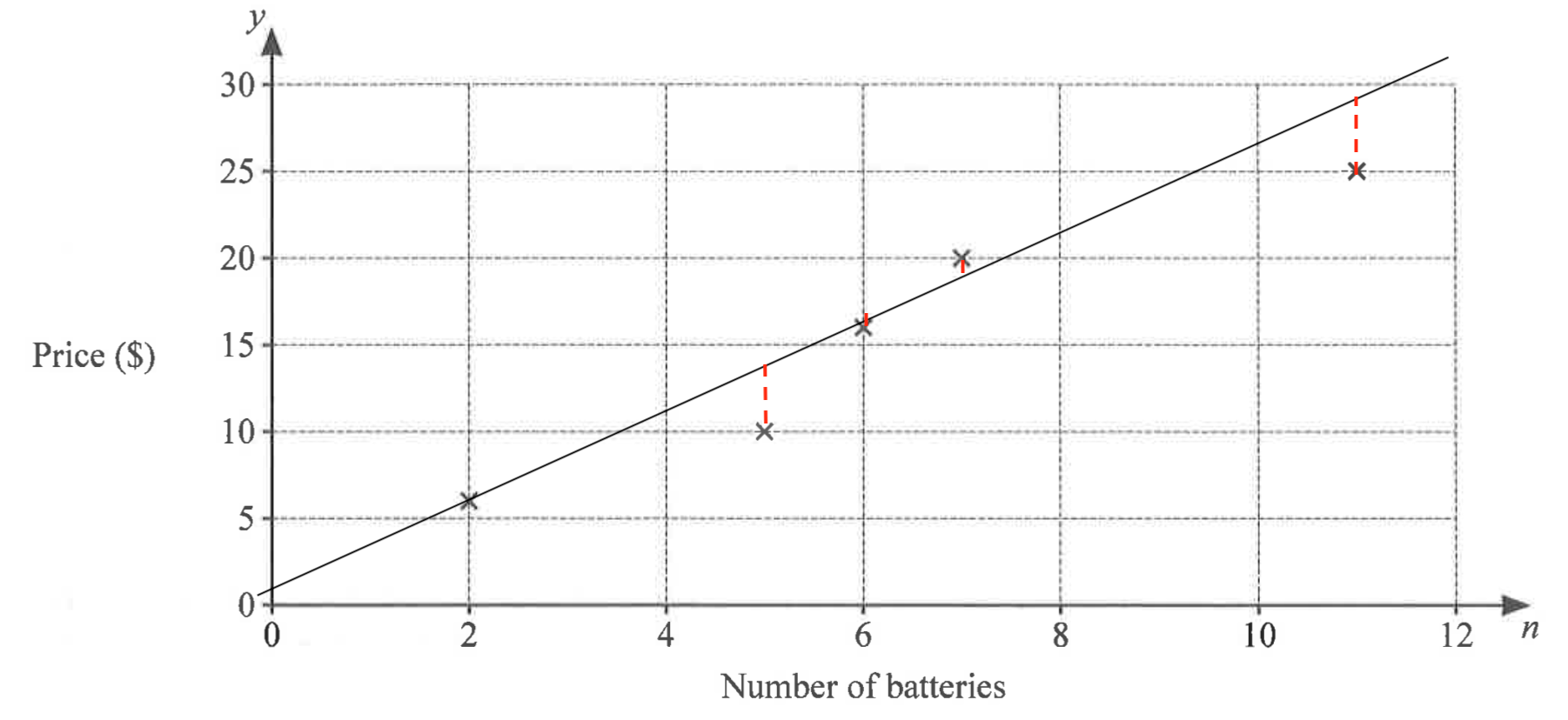
(b)(ii)(B) The residuals may be either positive or negative, and adding them out may result in them cancelling each other out. Squaring the residuals instead ensure the values will be positive and adding these values up will give a more meaningful result.
(b)(ii)(C) Using GC, required answers ![]()
(b)(iii) The sum of squares of the residuals will have to be of a smaller value.
(b)(iv)
Sum of squares of residuals![]()
![]()
Let ![]()
We have that ![]()
